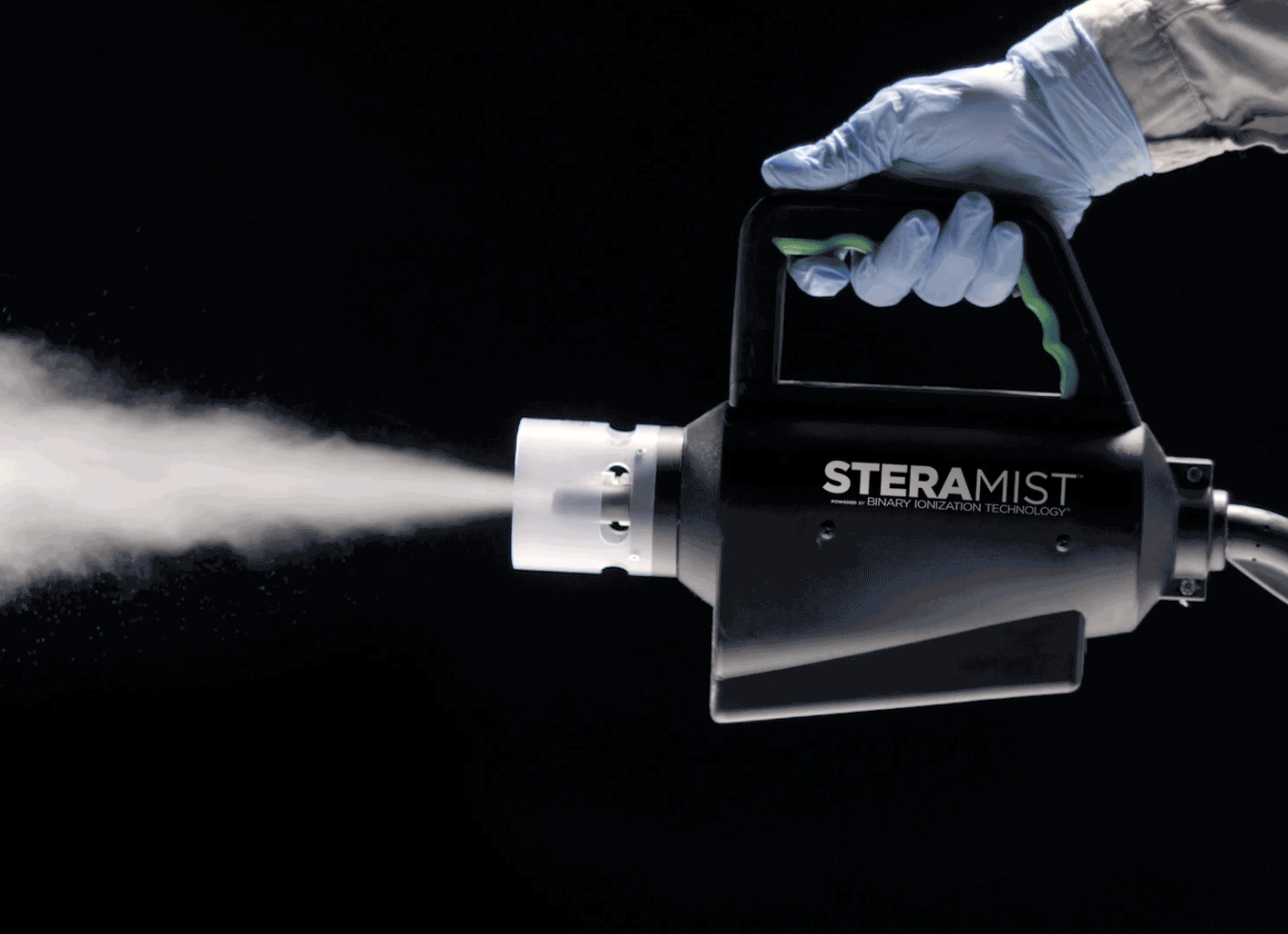Understanding the Difference Between Disinfectant Misting and Fogging
The pandemic has influenced everyone to think twice about cleanliness and hygiene, particularly businesses assessing the safety of their own office buildings. It has undoubtedly raised important questions, such as how thorough existing cleaning processes really are, which products are used, and just how capable these substances are for killing viruses.
‘Fogging’ is a term we have seen a lot more of since the pandemic hit, and the need for businesses to disinfect their interiors increased. This is a process we became familiar with on our quest to offer businesses a turnkey solution to help them transition their staff back to a clean and safe office.
However, during this process, we have educated ourselves on the best products and techniques available to effectively clean interiors and ensure they are COVID-19 secure. It’s because of this that we have made the decision to partner with 4serve and offer our clients their SteraMist service. The cleaning experts at 4serve highlighted the important differences between the fogging process that many of us have become familiar with, and the misting service that 4serve offer.
What is the Difference Between Misting and Fogging
1. Different control over dispersion
One of the key differences between misting and fogging is that misting treats surfaces as opposed to an area, which is made possible by the controllability of the mist being dispensed from the machine. Fogging doesn’t have this level of accuracy, which makes it extremely easy to miss a spot.
2. Disinfectant misting is safe for all electronics
The SteraMist sprays a dry mist and has a very short contact time. The mist dispersed using the SteraMist is perfectly safe for electronics, including medical and scientific equipment.
During fogging, the solution often reaches electronics and leaves a residue on keyboards, monitors and other equipment. These substances aren’t made for electronics and can cause them to deteriorate over time!
3. Reduced downtime with misting
An additional benefit of disinfectant misting using the SteraMist is that there’s a reduced downtime in comparison to fogging. Due to the dry mist and short contact time, the mist quickly evaporates from the surfaces it is sprayed onto. Comparatively, fogging leaves a chemical residue in the air and on surfaces for a longer period of time.
4. Non-toxic products used
One of the most significant downsides of fogging is that the chemical disinfectants dispersed during the process remain in the air for much longer and can be inhaled by those entering a space after its clean.
These disinfectants aren’t supposed to be inhaled, but the SteraMist, on the other hand, utilises ionised Hydrogen Peroxide (iHPTM) and is a non-caustic, chlorine and bleach-free fog, which doesn’t linger in the air. The 4serve specialists stay on site to take swab tests and readings to accurately ensure that a space is safe for people to enter after the misting treatment.
There are many factors to consider when cleaning a commercial space. Downtime, chemicals, effectiveness and cost are among the most important of these considerations. The SteraMist kills viruses and bacteria with 6-Log (99.9999%) efficiency, is non-corrosive and leaves no residue. It’s a safe, efficient and extremely effective cleaning service to help businesses maintain a clean and safe environment for both employees and customers.
RECENT PROJECTS:







